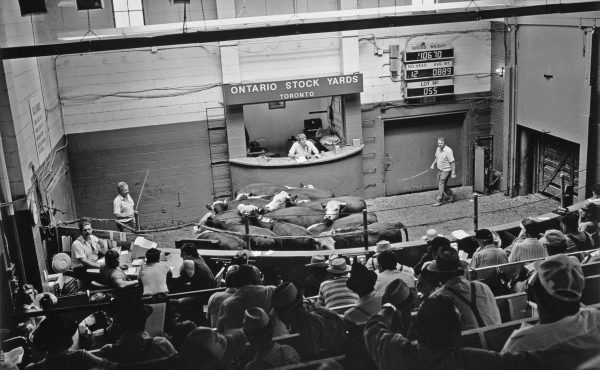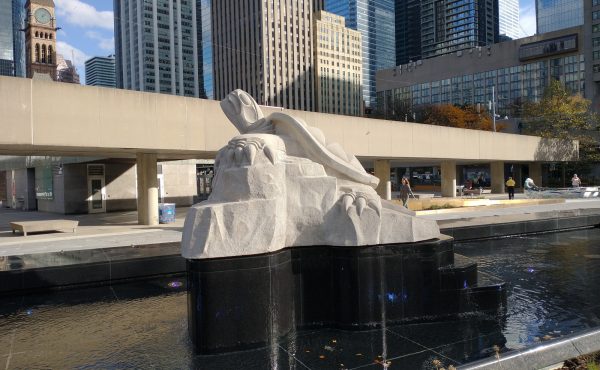
As I mentioned back in March, I’ve been in possession of a car for the last few months and I’ve been using it for out-of-town trips, errands for an ill relative, and moving large objects to and from the Spacing office. I’ve been a cycling commuter and a dedicated transit rider for over ten years, so this new perspective of being behind the wheel has been interesting to say the least. Traffic rage has become a small part of my life and I’ve recently started to wonder how bad Toronto’s traffic problems are compared to other cities.
A CBC feature brought to light some of the traffic challenges faced around the world. Here in Canada, our death rate involving vehicles is going down, but soaring traffic accident rates in developing countries around the world rise when the wealth of the nation rises. ”When you have economic development, a human disaster often follows on the roads,” says Etienne Krug of the WHO. ”There’s a big drama going on of all these lives lost. People believed if they were going to be a more developed country, they needed more roads and cars, and the price to pay will be more fatalities. But we can show them this doesn’t have to be the case.”
People who live in the developing world fare even worse. A recent report from the World Health Organization [WHO] says vehicle crashes are the leading cause of death around the world among people aged between 10 and 24. Nearly 400,000 of those killed in road accidents every year are under 25, the report says.
Many crashes in developing countries involve pedestrians and vehicles, or people travelling on group transport, such as a bus or a truck loaded with people going to market. As countries develop, the risk of road crashes increases. Poorer countries have lower accident death rates than middle-income nations like China or India.
Those two countries account for close to half of the world’s deadly traffic accidents, despite having just a fraction of the private cars and other vehicles. Nearly 600 people are killed on the highways and back lanes of China every day, a number that has soared recently as the country’s white-hot economy spurs road construction and car ownership. As India races to catch up with China economically, road deaths there are surging ahead too, some 400 to 500 every day. In 2000, some five million Indians had a car. Now that number has more than doubled and is growing at close to 10 per cent a year.
I went on YouTube and found a number of examples of the traffic chaos in Chinese cities. While I’ll still feel small pangs of traffic rage here in Toronto until I return my borrowed car, I’m a little relieved that I’m driving in a country where people moreorless obey the rules for the road.
Zhaoqing, China, with music soundtrack. 4 minutes.
An American provides commentary from his hotel window, with cultural insensitivity. 7 minutes.
Shanghai, China. Cyclists will love this. 2:44 minutes.
Shanghai, China. Cyclists will cringe, especially as a truck kinda slows for a cyclist crossing an intersection, but the rider has to out-pedal the truck just to survive. 29 seconds.
Shantou, China. This street level video makes the chaos seem even more confounding. 37 seconds.
Hangzhou, China. Cyclists may like this as bikes and motorbikes seem to dominate this underpass. 24 seconds.




12 comments
Gwynn Dyer had an acticle on this at
He says having a high accedent rate is normal for the first generation dirver, but it drops off as people get more expirenced over the generations.
It is a bit strange how people equate cars and a big road infrastructure with development. China had it right all along with their amazing cycling culture, they are now going back and don’t even realize it. Countries like Holland, Denmark, Finland and even Germany are progressing by giving more relevance to their cycling community and by improving their mass transit infrastructure. In those countries driving is seen as a privilege, not a God given right. China is going forward economically, but they are going backward socially and environmentally and things will only improve if they realize that they do not have to follow North America’s bankrupt concept of development. I only see thing getting worst over there (at least as bad as here).
Clip number two is definitely a Canadian rather than an American. No American would really use “eh” or “kilometer”. Not to mention that his accent is very Canadian.
Sorry to nitpick. Great post.
Vietnam is worse. WAY worse.
Everyone should also check out this month’s SEED magazine on the revolution to green China. Very exciting read.
I was in Shanghai for two weeks, for the most part walking around the city. I had no problem getting across busy roads or even sharing the road with a mix fellow pedestrians, scooters, bikes, and cars. It seems drivers there, as in Beijing and Suzhou, use a very different system then used in North Americans.
For instance if you cross an intersection, drivers will certainly not stop for you, but simply drive around you. It’s a bit scary at first, but once you understand this system and keep walking, it works surprisingly well. When I got back to Hong Kong, that is when again I had to really watch my step as drivers simply follow the rules as set out by traffic engineering. One wrong move and you’re toast!
If you watch clip #1 you see that the cars move slowly. This is one key. Secondly, there is respect for the small guy – scooters and pedestrians. It’s not so combative as N.A. Roads.
Yes course, it’s not a perfect system, but it is worth really understanding. At least it makes better YOU-TUBE clips then the daily crawl along the DVP.
Definitely a Canadian in clip #2. Not only a Canadian, but a Canadian with a classic, Tim Hortons-drinking, hockey-loving accent. He’s also listed himself as such in YouTube, so maybe the dig about cultural insensitivity could be redirected?
Let’s remember, apparently in China, wearing a seatbelt when you’re a passenger in a car is considered an insult to the driver’s abilities.
>Vietnam is worse. WAY worse.
>
>Comment by shaunpierre
haha, i was just gonna say. i thought those clips of chinese traffic looked pretty calm compared to saigon.
http://www.youtube.com/watch?v=IO7q3ruF8NQ
In Bangkok my experience with driving was that the streets were more like rivers of fish. The lines on the road meant nothing, and traffic flowed on the wrong side of the street as much as it flowed on the right side!
The point was if people swam with the traffic instead of rigidly followed the rules you wouldn’t get into an accident. I found the whole experience to be wonderfully organic.
It seems like China should seriously consider investing in light rail to replace the massive numbers of cars, buses and motorcycles. While the large cities have so much congestion that they need subways, they should build a mesh of light rail lines to complement the subway system. China seems to be way behind Europe, Japan or even North America in building light rail lines. Wikipedia only lists 6 cities in China with light rail, even though there are dozens of cities in China with over a million inhabitants and many more over 500,000.
I can watch 5 clips at a time!
(one I don’t particularly care for)